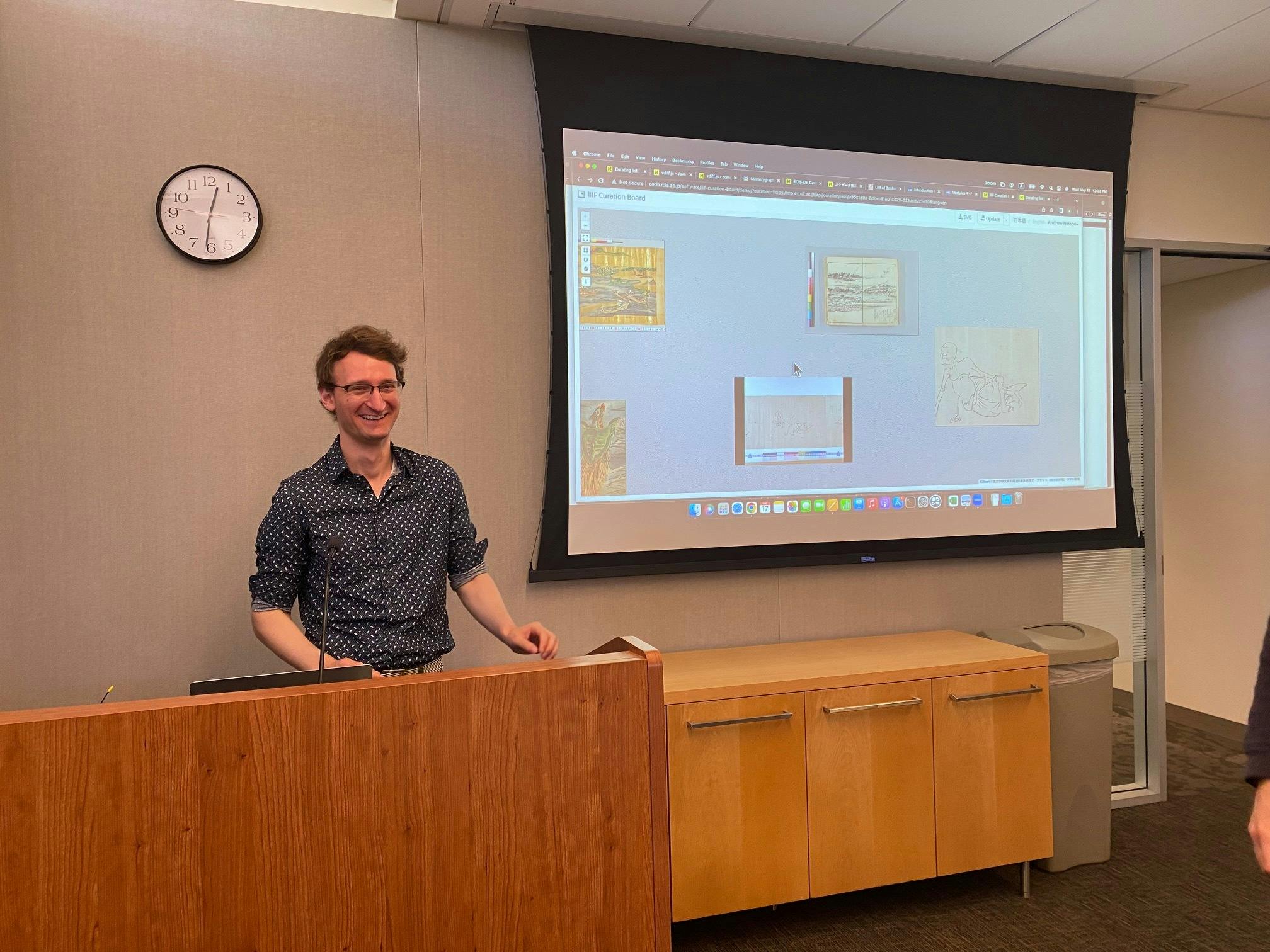
The East Asia Library recently hosted a two-part workshop on Digital Humanities Resources for Japan Studies. Inspired by the recent advances in research methods presented at the Tools of the Trade: The Way Forward conference held at Harvard University from 14 - 16 March 2023, East Asia Library Director Dr. Regan Murphy Kao and East Asian Languages and Cultures PhD Candidate Andrew P. Nelson prepared an opportunity for Japan scholars to engage with cutting edge digital tools.
The first session, “Tools for Text Analysis,” was held on May 10th and introduced participants to landmark projects from the National Diet Library, including optical character recognition (OCR) full-text search and an n-gram viewer for Japanese. Attendees also learned to use the Chamame online Japanese text parser, the KuroNet kuzushiji optical character recognition developed by the Center for Open Data in the Humanities (CODH), and the machine-assisted human-transcribed text database available through Minna de Honkoku.
In the second session, “Digital Imaging Tools for Research and Teaching,” on May 17th, attendees learned about the International Image Interoperability Framework (IIIF) and tested out IIIF viewers. We conducted image searches through the National Diet Library and Japan Search portals, and curated image collections using Cultural Japan’s Self Museum and the CODH IIIF curation board. Participants encountered individual platforms such as the Edomi portal for Edo period resources and the University of British Columbia’s Behind the Camera archive of Japanese women photographers, which provide richly annotated collections of curated images. Finally, the workshop demonstrated early phases of AI image classification through the CODH’s face tagging software.
Each session was divided into two parts: the first dedicated to the introduction of new tools, and the second reserved for resource-sharing and guided hands-on experience. Andrew prepared an initial guide to the resources, which has been converted into a libguide, Digital Humanities resources for Japanese Studies, on the library website. This living guide will serve the Japan Studies community in an exciting new period of research possibilities.